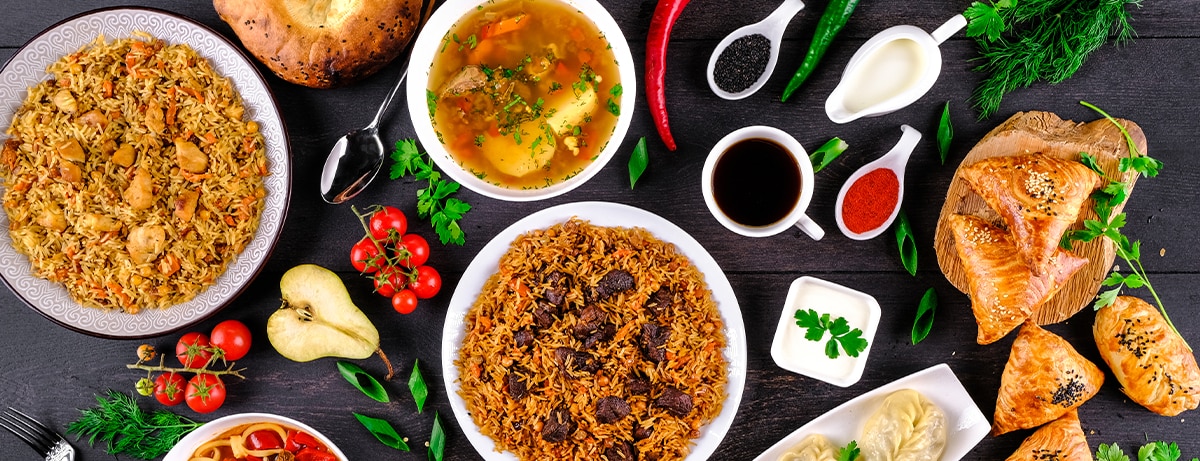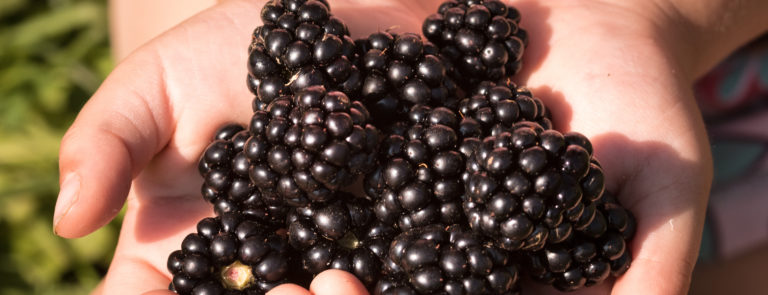15% off €35 or 20% off €45
Iron sources: foods high in iron

Summary
1How much iron do we need?
7mg a day for men over 18 8mg a day for women aged 19 to 50 7mg a day for women over 50
26 top food sources of iron
Fish, meat, eggs, iron drinks, fruits, vegetables, nuts & seeds
3Are plant sources of iron as good as animal sourc
Our ability to absorb iron from a vegetarian source is less effective than from an animal source.
We all need iron. It’s an essential mineral which plays a key role in transporting life-giving oxygen around the body, among other important functions. However, many people experience low iron levels and in fact, it’s the most common nutritional deficiency in the world.1
Let’s learn all about why we need iron, iron rich foods and how you can get enough…
What is iron and why do we need it?
Iron is an important mineral that our bodies need for growth and development. It is a key part of the protein haemoglobin, which helps make up our red blood cells and is what gives blood its red colour.2
Here are 3 reasons why our bodies need iron:
- Iron contributes to normal oxygen transport around the body: haemoglobin acts as a vehicle for oxygen, carrying oxygen particles from the lungs to all the cells in the body.3 When we get sufficient iron through our diet, we make plenty of haemoglobin. Running low on iron means that your body can’t make as much haemoglobin – and subsequently, can’t carry as much oxygen to your body’s cells. So, if you’re lacking iron, you might find yourself getting tired and short of breath.
- Iron contributes to normal energy-yielding metabolism: iron also helps us in the process of converting food to energy. So, without iron, our bodies can’t produce energy properly.4
- Iron contributes to the normal function of the immune system: iron is also involved in our immune response and helps it to function normally.

How much iron do we need?
- 7mg a day for men over 18
- 8mg a day for women aged 19 to 50
- 7mg a day for women over 50
Who might be low on iron?
Iron deficiency – known as iron deficiency anaemia – is very common and is thought to affect around 25% of the world’s population.9
People in developed countries such as the UK tend to be less likely to have low iron levels due to greater access to nutritious foods.10 However, there are reasons why someone might become deficient in iron, and these include:
- Being vegan or vegetarian – many vegan and vegetarian sources of iron are available, but iron from plant sources tends to be lower in amount and is less easily absorbed than meat sources.11,12
- Following a highly restricted diet – extreme weight loss diets or fasts can result in low iron levels and are not recommended generally.13
- Being pregnant – iron requirements are naturally higher during pregnancy as iron is needed for the developing foetus.14 Therefore, pregnant women can run low on iron unless they up their intake.
- Menstruating – losing blood through a monthly period can cause low iron levels, especially if they’re heavy.15
- Your age and gender – approximately 38.6% of girls between the ages of 12 and 20 have low iron levels.16
Handpicked content: Why is iron so important for women?
Symptoms of low iron and iron deficiency anaemia
The main signs to look out for which might indicate you are low on iron are:17
- Lack of energy
- Shortness of breath
- Heart palpitations (where you can feel your heart beating and it might feel irregular)
- A pale complexion
A GP can diagnose iron deficiency anaemia with a blood test. Luckily, it’s easily treated by increasing your intake of iron. This is usually done either through food or supplementation, which your GP will advise you on.

6 top food sources of iron
-
Fish & meat
Some of the most bioavailable food sources of iron come from animal products like meat and seafood:19
- Meat, particularly beef and chicken liver
- Fish, such as sardines, tuna, and mackerel
- Oysters, clams, and other seafood
-
Eggs
Eggs are another great dietary source of iron, with two fried scrambled eggs containing about 2.3mg.20 That’s roughly 14% of the recommended daily intake of iron, based on a 2,000-calorie diet.
-
Iron drinks
Unfortunately, you won’t find much iron in milk. Try swapping to plant alternatives! Some (like soy milk and oat milk) are natural sources of iron, while others are fortified.21 Either way, they’ll help you reach your RDA.
Fruit juices, especially prune juice, are also great if you’re looking to drink your iron intake.22
Not convinced? Try an iron-rich smoothie instead; there’s plenty of room to get creative with your favourite fruit and veg.
-
Fruits & vegetables
If you’re vegan or vegetarian, looking for foods rich in iron can be tricky as meat and dairy are likely not part of your diet. Luckily, there are many fruits and green leafy vegetables high in iron.23
Green leafy veg, like spinach, kale, broccoli, and brussel sprouts are great, iron rich vegetables that you can add to many meals, and dried fruits like prunes, apricots, and figs make delicious iron-rich snacks.24
-
Legumes
Legumes are a group of vegetables including beans, peas, and lentils. Some of them are a great dietary source of iron, including lentils, kidney beans, butter beans and especially chickpeas.24
Chickpeas have the highest iron content in the legumes family, with 2.8mg per 100g of chickpeas.25
-
Nuts & seeds
Lots of seeds and nuts are great sources of iron, including pumpkin seeds, sesame seeds and flaxseeds.26
The products that we make using these seeds are high in iron too. So, products like tahini, which is made from sesame seeds and often used in hummus, make great additions to your food cupboard.27
Handpicked content: Risk of iron deficiency for vegetarians
Are plant sources of iron as good as animal sources?
Our ability to absorb iron from a vegetarian source is less effective than from an animal source. However, absorption can be enhanced by including a source of vitamin C with iron-rich plant-based food.28
.png)
What are iron supplements?
There are lots of different types of iron supplements available, which will all help you up your iron intake. However, before taking iron supplements it is best to check with your GP to make sure it is safe for you to do so.
You can also take liquid iron supplements, iron tablets and even drinks with iron added. These are recommended for certain groups of people like pregnant women, menstruating women, vegetarians, and vegans, as well as people with other restrictive diets.
Easy, iron rich snack ideas
Want some iron-rich snack inspiration? Try these the next time you’re peckish:
- Hummus and red pepper or carrot sticks
- Handful of almonds with an apple
- A small piece of dark chocolate with a handful of blueberries
- Porridge sprinkled with pumpkin seeds
- A few dried apricots with almonds
- A small bowl of edamame beans with a squeeze of lemon juice
Or load up your usual smoothie with iron-rich fruit and veg. Spinach is a winner (if you can handle the colour). Beetroot’s another iron-rich (and colourful) option.
To sweeten things up, add a banana: each one contains about 0.3mg of iron.31
Is it possible to get too much iron?
Yes. As vital as iron is to the functioning of the body, we only need it in small amounts. If we get too much iron, it can be bad for us - 20mg per day is considered too high a dose to have regularly.32
It’s unlikely that someone would get too much iron through their diet unless they’re regularly eating large amounts of red meat. More commonly, iron overload is caused by ingesting too much via iron supplements.
If you’re not vegan, pregnant, menstruating or have a condition such as IBD and are eating a balanced diet including iron-rich foods, you’re unlikely to need an iron supplement.
Symptoms of too much iron include:6
- Stomach pains
- Nausea
- Vomiting
- Constipation
These symptoms should stop quickly once you reduce your iron intake below 20mg.
The final say
- We need iron to form red blood cells, transport oxygen, create energy and keep our immune system healthy
- Iron deficiency is common and can cause symptoms like tiredness, a pale complexion and heart palpitations
- You’re more at risk if you’re pregnant, menstruating, vegetarian/vegan, or on a restrictive diet
- Our bodies find iron from animal sources easier to absorb compared to plant sources. However, making sure you have enough vitamin C can enhance iron absorption from vegan/vegetarian sources
- There are many foods that contain iron from both animal and plant sources – so, whatever your diet, you can get plenty every day.
- Meat, fish, legumes, vegetables, fruits, seeds, nuts, and even dark chocolate are all good food sources of iron.
If you’re still concerned about your iron intake, or you think you might be anaemic, speak to your GP who might recommend some iron supplements to help you along.
1. https://www.ncbi.nlm.nih.gov/pmc/articles/PMC3685880/
2. https://www.nhs.uk/conditions/red-blood-count/
3. https://courses.lumenlearning.com/wm-biology2/chapter/transport-of-oxygen-in-the-blood/
4. https://www.spatone.com/en-gb/about/the-role-of-iron/
5. https://www.nhsinform.scot/illnesses-and-conditions/nutritional/iron-deficiency-anaemia
6. https://www.nhs.uk/conditions/vitamins-and-minerals/iron/
7. https://tinytotsnutrition.co.uk/4-iron-rich-foods-and-weaning-%E2%AD%90/
8. https://adc.bmj.com/content/81/3/247
9. https://cks.nice.org.uk/topics/anaemia-iron-deficiency/background-information/prevalence/
10. https://pubmed.ncbi.nlm.nih.gov/11943635/
11. https://www.ncbi.nlm.nih.gov/pmc/articles/PMC3999603/
12. https://ods.od.nih.gov/factsheets/Iron-HealthProfessional/
13. https://www.ncbi.nlm.nih.gov/pmc/articles/PMC8456489/
15. https://pubmed.ncbi.nlm.nih.gov/36706856/
17. https://www.nhs.uk/conditions/iron-deficiency-anaemia/
18. https://ods.od.nih.gov/factsheets/Iron-Consumer/
19. https://www.bda.uk.com/resource/iron-rich-foods-iron-deficiency.html
20. https://fdc.nal.usda.gov/fdc-app.html#/food-details/172187/nutrients
21. https://www.frontiersin.org/articles/10.3389/fnut.2022.988707/full
22. https://ohioline.osu.edu/factsheet/HYG-5559
23. https://vegsoc.org/info-hub/health-and-nutrition/iron/
25. https://fdc.nal.usda.gov/fdc-app.html#/food-details/173799/nutrients
26. https://pharmeasy.in/blog/iron-rich-foods-to-add-to-your-diet/
27. https://fdc.nal.usda.gov/fdc-app.html#/food-details/168604/nutrients
28. https://pubmed.ncbi.nlm.nih.gov/6940487/
29. https://www.who.int/health-topics/food-fortification#tab=tab_1
30. https://www.ukflourmillers.org/bread-and-flour-regulations
31. https://fdc.nal.usda.gov/fdc-app.html#/food-details/173944/nutrients
The advice in this article is for information only and should not replace medical care. Please check with your GP or healthcare professional before trying any supplements, treatments, or remedies. Food supplements must not be used as a substitute for a varied and balanced diet and a healthy lifestyle.



